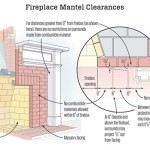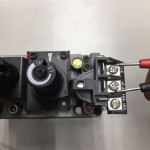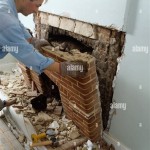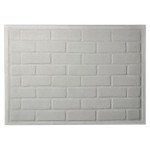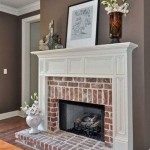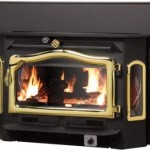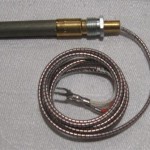Fireplace Inserts With Blower: A Comprehensive Guide
Fireplace inserts with blowers represent a significant upgrade over traditional open fireplaces. They provide enhanced heating efficiency, improved air circulation, and a safer, controlled burning environment. This article delves into the functionalities, benefits, selection criteria, installation considerations, and maintenance requirements associated with fireplace inserts equipped with blowers.
A fireplace insert is essentially a self-contained heating appliance designed to fit within an existing fireplace opening. They are typically constructed from cast iron or steel, and are engineered for efficient combustion and heat transfer. The defining element of a fireplace insert with a blower is the integrated fan system, which actively distributes heated air into the room, substantially improving the appliance's overall heating capacity.
Understanding the Functionality of Blowers in Fireplace Inserts
The core function of a blower in a fireplace insert is to enhance heat distribution. Without a blower, a significant portion of the heat generated by the fire radiates directly into the chimney, resulting in energy waste and limited heating of the living space. The blower addresses this inefficiency by drawing cool air from the room, circulating it around the heated firebox or heat exchanger, and then forcing the warmed air back into the room through strategically placed vents.
Blowers are typically powered by an electric motor, which is connected to a fan or squirrel cage mechanism. The speed of the blower is often adjustable, allowing users to control the airflow and heating intensity based on their needs and the size of the room. Some models feature automatic controls that regulate blower speed based on the firebox temperature, ensuring optimal performance and preventing overheating.
Different blower designs exist, impacting their performance and noise levels. Axial fans are commonly used in smaller inserts, while centrifugal blowers (squirrel cage fans) are more prevalent in larger models due to their higher airflow capacity and ability to overcome greater static pressure. The placement of the blower within the insert also affects its efficiency and noise output. Some blowers are located at the back of the unit, drawing air from behind the fireplace, while others are positioned beneath the firebox, drawing air from the floor level.
The integration of a blower significantly improves the heating efficiency of a fireplace insert. By actively circulating heated air, the blower prevents heat from simply rising to the ceiling and being lost. The forced-air circulation creates a more uniform temperature distribution throughout the room, eliminating cold spots and increasing overall comfort.
Key Advantages of Fireplace Inserts with Blowers
The benefits of choosing a fireplace insert with a blower over traditional fireplaces or inserts without blowers are numerous. These advantages extend to heating efficiency, safety, convenience, and environmental impact.
Enhanced Heating Efficiency: As previously mentioned, the primary advantage is the significant improvement in heating efficiency. Blowers prevent heat loss up the chimney and ensure that more of the generated heat is effectively used to warm the living space. This results in lower fuel consumption and reduced heating costs, particularly in comparison to open fireplaces, which are notoriously inefficient.
Improved Air Circulation and Comfort: The forced-air circulation provided by the blower distributes heat evenly throughout the room. This eliminates cold zones and creates a more comfortable environment, especially in larger rooms or homes with poor insulation. The adjustable blower speed allows users to customize the airflow to their preferences, ensuring optimal comfort levels.
Increased Safety: Fireplace inserts with blowers offer enhanced safety compared to open fireplaces. The enclosed firebox prevents sparks and embers from escaping, reducing the risk of fire hazards. Many inserts also feature safety features such as automatic shut-off mechanisms in case of overheating or malfunction. The controlled combustion process also minimizes the production of smoke and creosote, reducing the risk of chimney fires.
Convenience and Control: Modern fireplace inserts with blowers often incorporate advanced control features, such as thermostats, programmable timers, and remote controls. These features allow users to easily manage the heating output and schedule operation according to their needs. Many inserts are also compatible with smart home systems, enabling remote control and monitoring.
Environmental Considerations: While burning wood or pellets does produce emissions, modern fireplace inserts are designed to burn fuel more cleanly and efficiently than traditional fireplaces. The controlled combustion process minimizes the release of pollutants into the atmosphere. Many inserts also meet stringent emission standards set by regulatory agencies, such as the Environmental Protection Agency (EPA).
Aesthetic Appeal: Fireplace inserts are available in a wide variety of styles and finishes, allowing homeowners to customize the look of their fireplace to complement their décor. From traditional cast iron designs to sleek, modern models, there is an insert to suit virtually any aesthetic preference. The blower is typically integrated seamlessly into the insert's design, maintaining a clean and attractive appearance.
Factors to Consider When Selecting a Fireplace Insert with Blower
Choosing the right fireplace insert with a blower requires careful consideration of several key factors, including heating capacity, fuel type, blower specifications, installation requirements, and budget. An informed decision will ensure that the selected insert meets the homeowner's needs and provides years of reliable performance.
Heating Capacity (BTU Output): The heating capacity of a fireplace insert is measured in British Thermal Units (BTUs). The appropriate BTU output depends on the size of the room or area to be heated, the insulation levels in the home, and the climate. A general rule of thumb is to choose an insert with a BTU output that is slightly higher than the estimated heating needs to account for variations in weather conditions.
Fuel Type: Fireplace inserts are available in various fuel types, including wood, gas (natural gas or propane), and electric. Wood-burning inserts offer a traditional aesthetic and the satisfaction of burning real wood, but require more maintenance and produce more emissions. Gas inserts are more convenient and offer cleaner burning, but require a gas line connection. Electric inserts are the easiest to install and operate, but may not provide the same level of heating capacity as wood or gas models.
Blower Specifications: The blower specifications, including airflow (measured in cubic feet per minute or CFM) and noise level (measured in decibels or dB), are important considerations. A higher CFM rating indicates greater airflow and faster heating, but may also result in a higher noise level. Look for models with adjustable blower speeds to control airflow and noise. It's also important to consider the blower's power consumption, as this will affect your electricity bill.
Firebox Size and Insert Dimensions: The firebox size determines the size of the wood or fuel that can be burned. The insert dimensions must be compatible with the existing fireplace opening. Carefully measure the fireplace opening and compare it to the insert's dimensions to ensure a proper fit. Leave adequate clearance around the insert for proper ventilation and heat dissipation.
Efficiency Rating: The efficiency rating of a fireplace insert indicates how effectively it converts fuel into usable heat. A higher efficiency rating translates to lower fuel consumption and reduced heating costs. Look for models with EPA certification, which indicates that they meet stringent emission standards and are highly efficient.
Safety Features: Prioritize models with advanced safety features, such as automatic shut-off mechanisms, overheat protection, and spark screens. These features will help to prevent accidents and ensure safe operation. Consider models with carbon monoxide detectors to provide an extra layer of protection.
Installation Requirements: The installation requirements vary depending on the fuel type and the complexity of the insert. Wood-burning inserts typically require a chimney liner to ensure proper venting and prevent creosote buildup. Gas inserts require a gas line connection and may require professional installation. Electric inserts are typically the easiest to install, requiring only an electrical outlet.
Budget: Fireplace inserts with blowers range in price from a few hundred dollars to several thousand dollars. The price depends on the fuel type, heating capacity, features, and brand. Establish a budget and research different models within that price range. Consider the long-term cost of ownership, including fuel costs, maintenance costs, and potential repair costs.
Installation and Maintenance
Proper installation and regular maintenance are crucial for ensuring the safe and efficient operation of a fireplace insert with a blower. Improper installation can lead to performance issues, safety hazards, and voided warranties.
Professional Installation: It is highly recommended to have a qualified professional install a fireplace insert, especially for gas and wood-burning models. A professional installer will ensure that the insert is properly connected to the chimney, gas line (if applicable), and electrical system. They will also ensure that all safety regulations are met and that the insert is operating correctly.
Chimney Inspection and Cleaning: Before installing a wood-burning insert, have the chimney inspected and cleaned by a certified chimney sweep. This will remove any creosote buildup and ensure that the chimney is in good condition. A damaged or clogged chimney can create a fire hazard and reduce the insert's efficiency.
Regular Cleaning: Regularly clean the firebox and glass door of the insert to remove ash, soot, and creosote. Use a fireplace brush and a non-abrasive cleaner to clean the glass door. Clean the blower vents to ensure proper airflow.
Blower Maintenance: Check the blower regularly for dust buildup and debris. Clean the blower blades or fan using a vacuum cleaner or a soft brush. Lubricate the blower motor according to the manufacturer's instructions. Replace the blower if it becomes noisy or stops working.
Annual Inspection: Have the fireplace insert inspected annually by a qualified technician. They will check for any signs of damage, wear, or malfunction. They will also inspect the chimney and venting system to ensure that they are in good condition.

35 Ruby Traditional Intellifire Touch Direct Vent Fireplace Insert Blower And Remote Electronic Ignition Majestic

Inserts Wood Osburn 2200 Insert With Blower Ob02201

30 Ruby Contemporary Intellifire Touch Direct Vent Fireplace Insert Blower And Remote Electronic Ignition Majestic

T25i Timberwolf Wood Fireplace Insert Hearth Stove Patio

Ventis Hei240 Wood Burning Insert Rockford Chimney

Napoleon Epi3 Wood Fireplace Insert Inserts By Rockford Chimney

Fireplaceinserts Net Osburn 2400 Fireplace Insert

Why A Wood Burning Fireplace Insert Bethesda Md Service

Breckwell Wood Fireplace Insert Sw180i

Osburn Matrix 2700 Wood Insert With Heat Activated Blower
Related Posts

